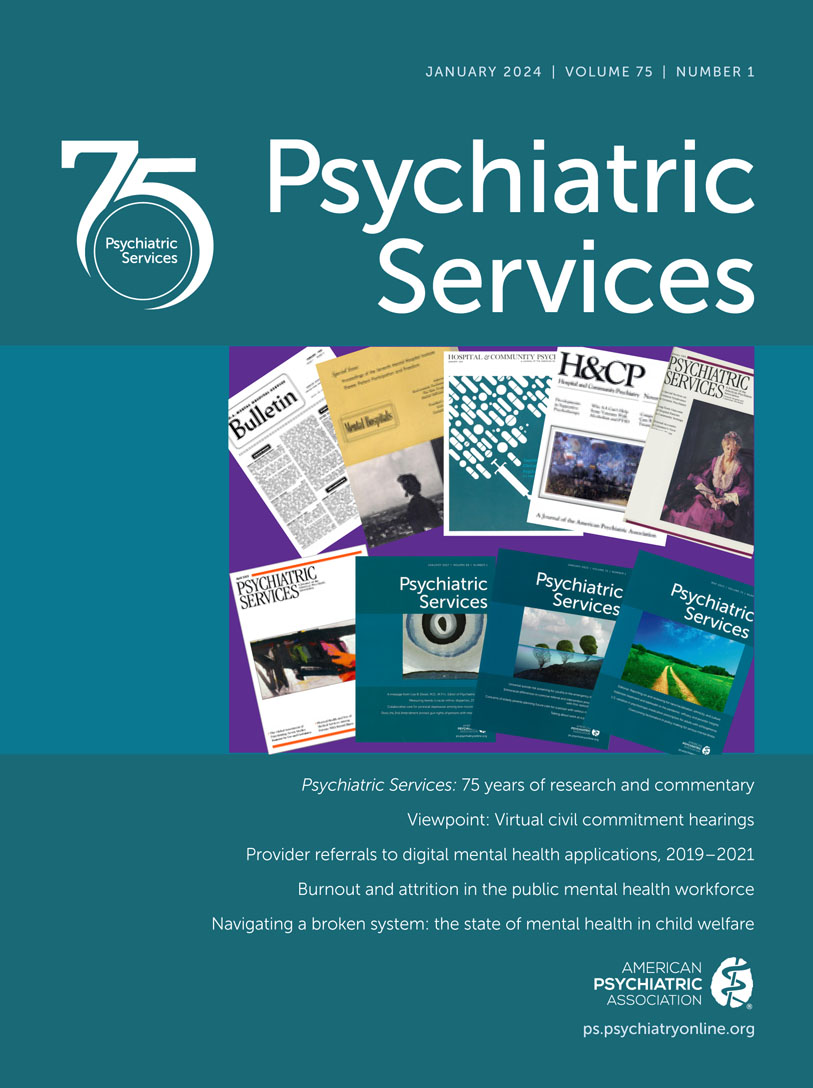Disparities in the Implementation of School-Based Mental Health Supports Among K–12 Public Schools
Abstract
Objective:
The authors sought to explore the availability of mental health supports within public schools during the COVID-19 pandemic by using survey data from a nationally representative sample of U.S. K–12 public schools collected in October–November 2021.
Methods:
The prevalence of 11 school-based mental health supports was examined within the sample (N=437 schools). Chi-square tests and adjusted logistic regression models were used to identify associations between school-level characteristics and mental health supports. School characteristics included level (elementary, middle, or high school), locale (city, town, suburb, or rural area), poverty level, having a full-time school nurse, and having a school-based health center.
Results:
Universal mental health programs were more prevalent than more individualized and group-based supports (e.g., therapy groups); however, prevalence of certain mental health supports was low among schools (e.g., only 53% implemented schoolwide trauma-informed practices). Schools having middle to high levels of poverty or located in rural areas or towns and elementary schools and schools without a health infrastructure were less likely to implement mental health supports, even after analyses were adjusted for school-level characteristics. For example, compared with low-poverty schools, mid-poverty schools had lower odds of implementing prosocial skills training for students (adjusted OR [AOR]=0.49, 95% CI=0.27–0.88) and providing confidential mental health screening (AOR=0.42, 95% CI=0.22–0.79).
Conclusions:
Implementation levels of school-based mental health supports leave substantial room for improvement, and numerous disparities existed by school characteristics. Higher-poverty areas, schools in rural areas or towns, and elementary schools and schools without a health infrastructure may require assistance in ensuring equitable access to mental health supports.
Access content
To read the fulltext, please use one of the options below to sign in or purchase access.- Personal login
- Institutional Login
- Sign in via OpenAthens
- Register for access
-
Please login/register if you wish to pair your device and check access availability.
Not a subscriber?
PsychiatryOnline subscription options offer access to the DSM-5 library, books, journals, CME, and patient resources. This all-in-one virtual library provides psychiatrists and mental health professionals with key resources for diagnosis, treatment, research, and professional development.
Need more help? PsychiatryOnline Customer Service may be reached by emailing [email protected] or by calling 800-368-5777 (in the U.S.) or 703-907-7322 (outside the U.S.).



